Having visited many countries in the past seeking photographic opportunities, it was just a matter of time before I would end up in India during Holi – the Festival of Colours. I prepared as best I could by gathering as much information about the country and customs beforehand while accepting the fact that there was a high probability I would have health issues while there. Countless stories were shared with me about stomach problems (aka: Delhi Belly), but after having experienced Holi, I can honestly say now that stomach issues are but the tip of the iceberg when it comes to health, Holi and India.
It is important to note that Holi celebrations are not confined to a single city nor to a single day. Quite the contrary, most of the country celebrates with varying degrees of enthusiasm and there are many events that precede and follow the official day of Holi. While most of my takeaways are from a photographer’s perspective (i.e. a person who will wilfully put themselves in precarious positions in order to get a good picture), this document contains quite a bit of information that I believe can be useful to most who visit India during Holi.
Footwear
Regardless of which city we visited, we had to remove our footwear before entering temples. Temple floors were wet, slippery and very dirty from all the powder being thrown towards the priests who were situated behind an altar (i.e. throwing powder on each other or applying powder on people’s faces is called “playing Holi”). People walking into the temple from the village barefoot also contributed to the dirtiness especially since sewer systems in small villages are primitive and livestock often roam within the village, meaning I have no doubt that fecal matter was present on people’s feet.
There are a lot of people entering and exiting the temples, therefore we checked our shoes only once in the morning in order to save time, skipping collecting and rechecking them every time we left the temple to discover the village. The roads in the smaller villages are not always paved, they are hilly, and there are small rocks and rubbish scattered everywhere. Cutting one’s foot is easy as I found out early on.
Given the dirt on temple floors and the fact that sustaining a cut to a foot while walking barefoot is highly likely, my advice to someone going to India for Holi would be to bring polysporin, rubbing alcohol, antiseptic wipes, and waterproof band-aids. Also, a pair of flip flops that can be carried in a (camera) bag in order to avoid checking and collecting shoes every time you want to leave the temple is ideal since it will help you be more efficient with your time all the while reducing the likelihood of sustaining a cut on your feet
Look up, look around the corner
Kids (and some adults) make their way to the top of 2 or 3 story buildings and throw coloured liquids and powder on unsuspecting people walking the narrow streets below. Also, kids with water guns corner anyone that walks near them and sprays them. It’s a bit disconcerting at first since one doesn’t expect it, but after a while, you get used to the fact that everyone is a target.
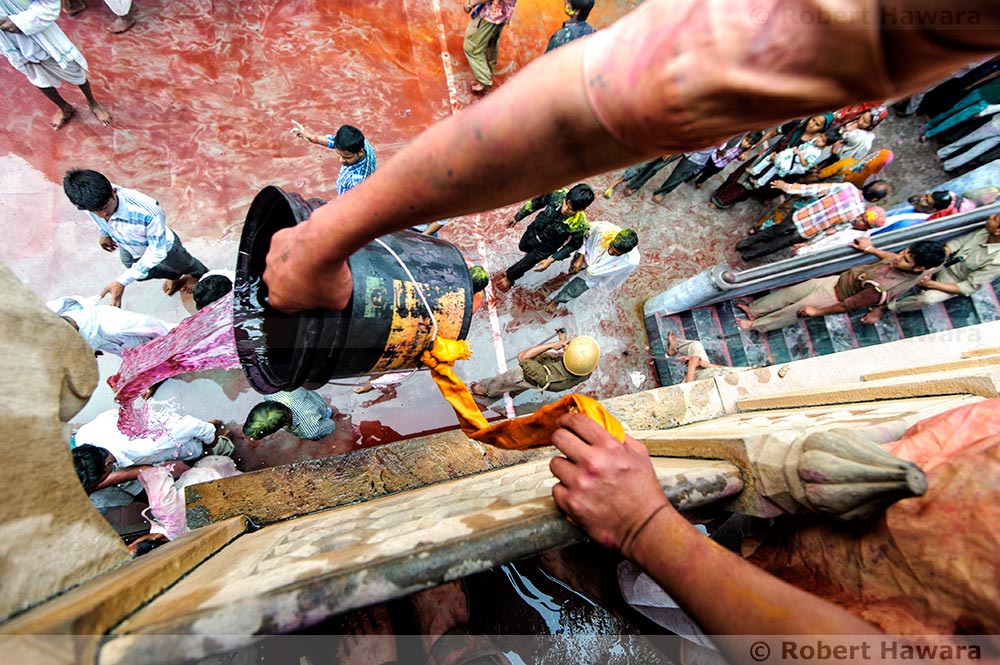
The powder thrown is flower/plant based. Kids often mix this powder (or other coloured liquids) with tap water and spray it on people using water guns or buckets. The makeup of the powder and the water used apparently becomes significantly more toxic in the larger cities so be careful.
I bought protective eyewear that I used whenever I walked in the streets and even in the temples when things got out of hand (i.e. whenever large amounts of water and powder were thrown on me). The kids don’t aim and really “go for it”, especially if you are carrying camera equipment or if you are a foreigner. One should keep in mind that camera equipment carried around your shoulders, neck or in your hands will make it harder for you to escape whenever kids “attack” you. The equipment will slow you down especially since the sloped roads can be slippery. My guides did step in however if kids or the situation got out of hand, so I always felt safe and in control.
As noted above, the coloured tap water is thrown onto everyone, but when kids reload, they often do so using whatever water is near them at the time. As the day goes on, the water used in the water guns becomes dirtier. Therefore, keeping your mouth closed is important since swallowing that water would most likely make a tourist quite ill.
Lastly, we suspect that some of the water that was thrown from up above contained an ingredient that resulted in what appeared to be a chemical burn on my forehead (I used rubbing alcohol and antiseptic wipes to clean my wounds with great success.) Other than a hat or a thicker bandana, there’s not much else I could have done to prevent this issue. This underscores the key risk for anyone attending Holi in India: you have no idea what is being thrown on you. It’s a risk you have to be willing to take.
Skin care
We were out photographing Holi from early morning to dusk and we were constantly in the sun. Sun screen is therefore very important, as is mustard or coconut oil. The latter two form a protective layer that prevents the powder from being absorbed by the skin. I forgot to apply clear nail polish to my toenails and as a result, 6 months later, my toenails are still slightly (orange) coloured.
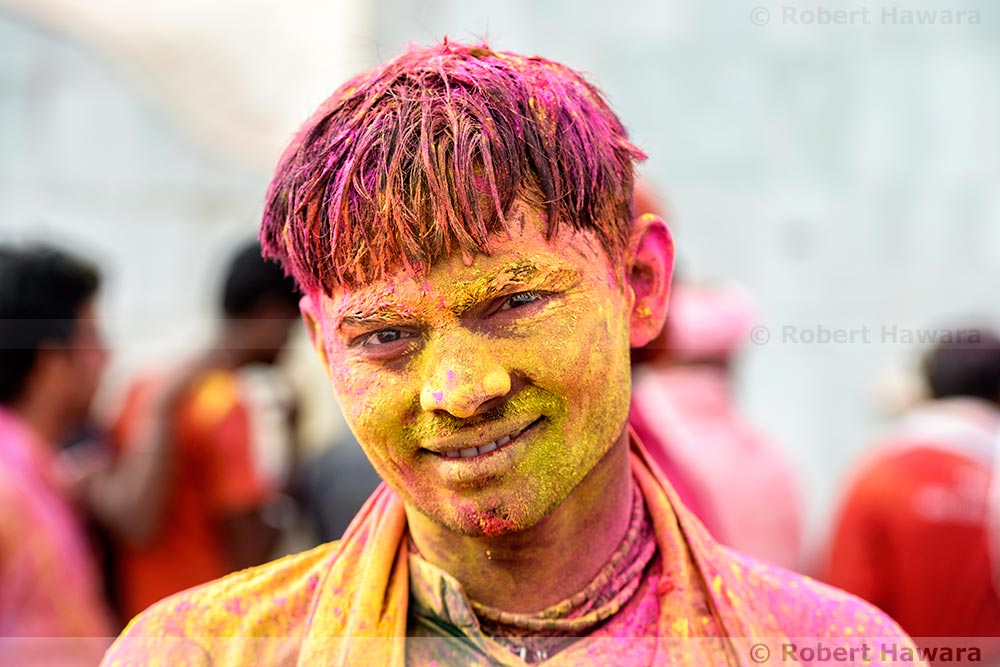
The powder being thrown gets into everything, including hair and ears. To clean my ears, I used syringes to push the powder out. Nothing can really be done about powder in the hair other than to wash it over and over again for a few days. The water pressure isn’t great in the small villages, thus complicating things for hair care (if you have long hair I suppose).
Having hand sanitizer at all times is recommended since finding a clean place to wash our hands wasn’t an easy task.
Hydration
As noted above, we were out in the hot sun for hours. Therefore, we drank a lot of bottled water. We always checked to see if the seal was broken though as it’s a common trick for some vendors to refill water bottles with tap water which can cause stomach problems for tourists.
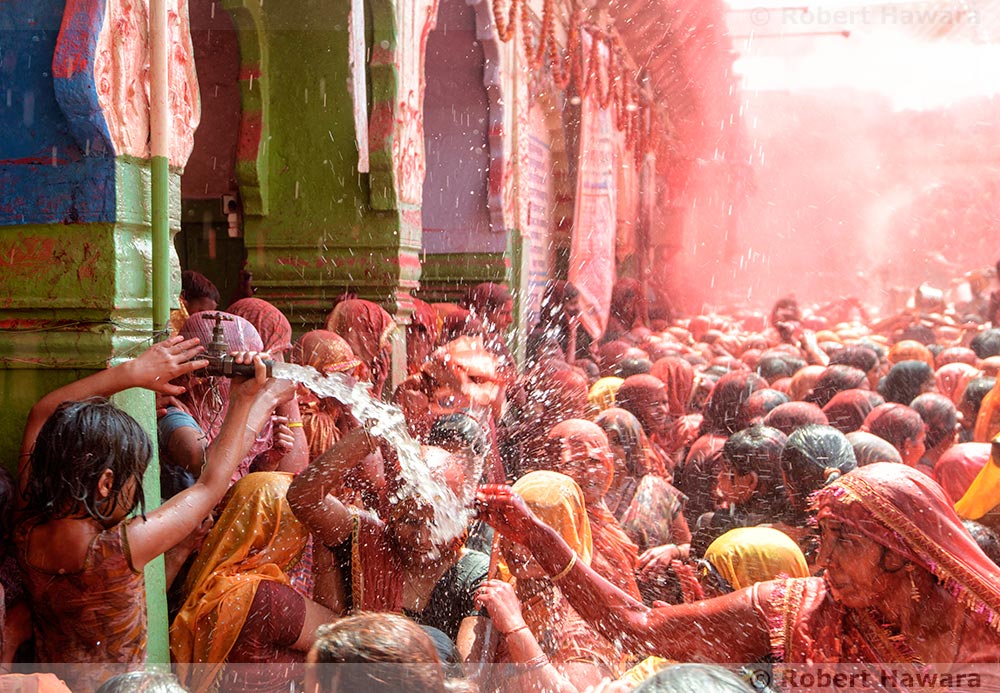
Lungs
Being in a temple during Holi for any length of time means that you will breathe copious amounts of coloured powder. I didn’t think it would affect me but it did, three days later. Unbeknownst to me, my guides actually took azythromicym pills immediately (and pre-emptively) after our first day in temples because they knew that they would in all likelihood get lung infections.
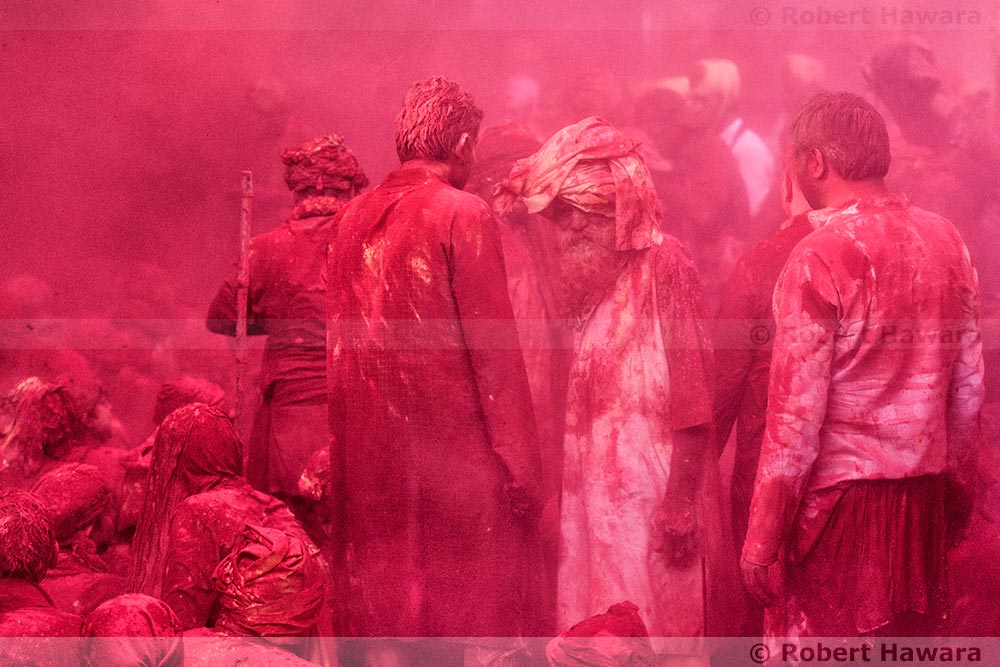
As a result of this knowledge gap, I had a terrible fever outbreak four days after my first visit to a temple. The guides recommended I take the azythromicym pills immediately to help with the infection. I supplemented the azythromicym pills with paracetamol (PCM) to help with the fever while in transit back to Delhi.
Once I arrived back in Delhi, I switched the paracetamol pills for Tylenol pills and took them until the fever subsided.
For anyone planning on staying inside temples for long periods of time, I would suggest wearing a mask or clothing that covers the mouth and nose in order to reduce the amount of powder inhaled.
Safety
Depending on the city or village, there can be a mad rush to get into the temples. I was almost caught in one; luckily the police that stood between the temple stairs and myself allowed me to go through when they saw my camera equipment. Behind me were thousands of locals pushing to get in.
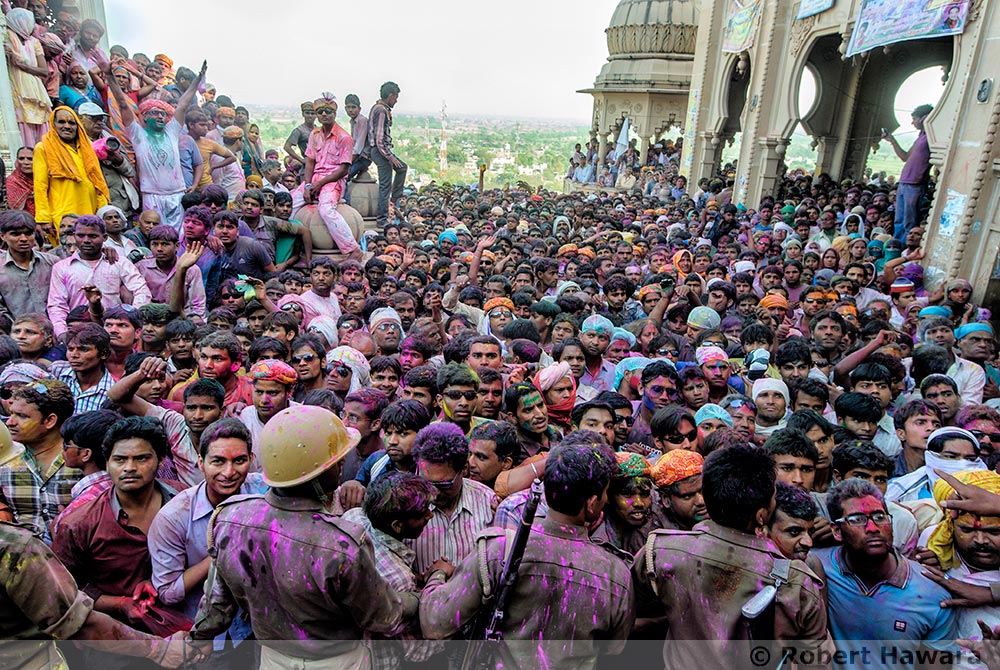
Because of the camera equipment, it can be very difficult to stay balanced since ones arms are often occupied using or protecting the camera equipment. Given their unnatural positioning (near the body, not providing any stability), it’s very easy to be pushed or to fall to the ground. It’s important to always be aware of your surroundings and the situation as it can change from one minute to another. For example, the city of Barsana normally has a population of 20,000 people. During Lathmar Holi, the city swells to almost a million with most people wanting to go to the main temple during prime hours. The main temple is very small however and can’t accommodate such an influx of people. Therefore, police and military personnel attempt to move people in and out by pushing people so that they don’t stand still. It makes for a very challenging visit since you have to fight for your space.
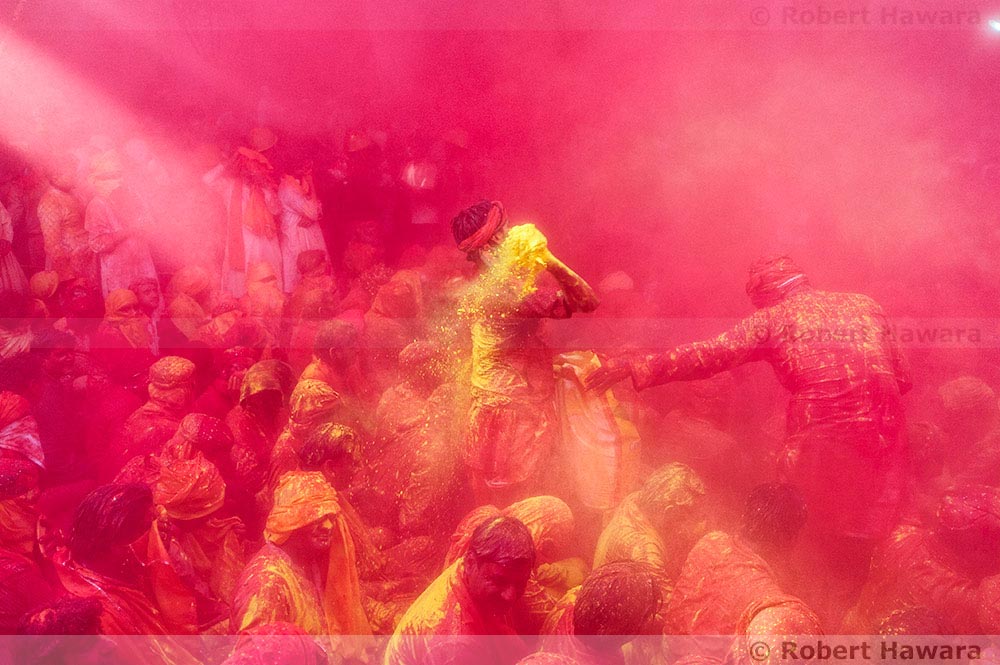
Being in such close proximity to so many people inside a partially covered temple probably has other medical implications (perhaps other diseases can be transmitted this way). This is not an event for claustrophobic or germaphobic people. As a rule of thumb, if you are not prepared to lose control over your personal space, you should stay away.
Summary
While the medical challenges were many, Holi in India is a once in a lifetime experience. With the appropriate knowledge, one can easily be prepared to treat minor issues and ailments that occur while being in the middle of one of the most chaotic events that anyone will ever experience.
Lastly, please note that this document was meant to outline some of the health issues and lessons learned from my trip to India. It was not written to dissuade anyone from going since overall, the experience was extremely positive, memorable and I can’t wait to go back!
